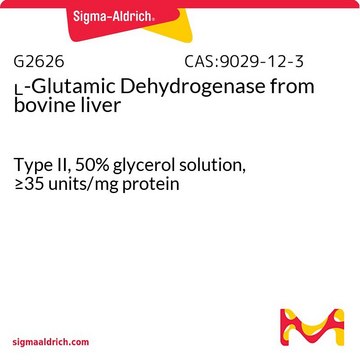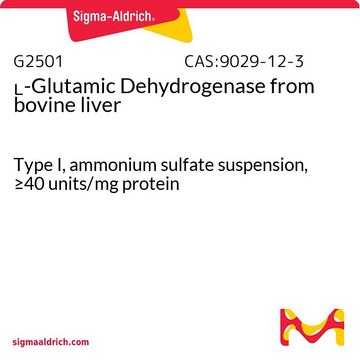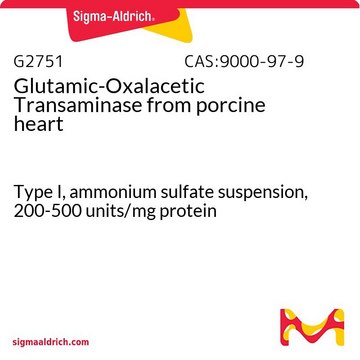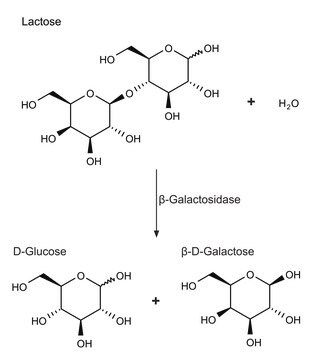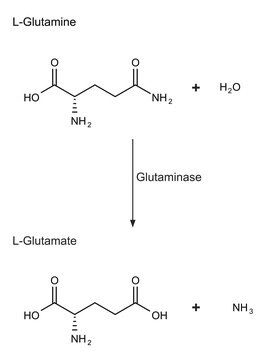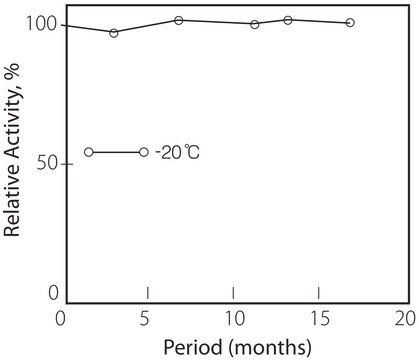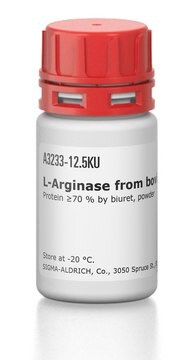G7882
L-Glutamic Dehydrogenase from bovine liver
Type III, lyophilized powder, ≥20 units/mg protein
Synonym(s):
L-GLDH, L-Glutamate:NAD[P]+ Oxidoreductase (deaminating), Glutamate Dehydrogenase from bovine liver
About This Item
Recommended Products
biological source
bovine liver
Quality Level
type
Type III
form
lyophilized powder
specific activity
≥20 units/mg protein
UniProt accession no.
storage temp.
−20°C
Gene Information
cow ... GLUD1(281785)
Looking for similar products? Visit Product Comparison Guide
Application
Biochem/physiol Actions
The bovine enzyme is characterized by three sets of properties:
- It has a reversible concentration-dependent association, producing higher molecular weight forms.
- Forms tight enzyme-reduced coenzyme-substrate ternary complexes whose rates of dissociation modulate the steady-state reaction rates.
- Exhibits a wide variety of effects from the binding of any of a number of nucleotide modifiers.
L-glutamic dehydrogenase catalyzes the conversion of glutamate to α-ketoglutarate.
Packaging
Unit Definition
Physical form
Analysis Note
substrate
Signal Word
Danger
Hazard Statements
Precautionary Statements
Hazard Classifications
Resp. Sens. 1
Storage Class Code
11 - Combustible Solids
WGK
WGK 3
Flash Point(F)
Not applicable
Flash Point(C)
Not applicable
Personal Protective Equipment
Regulatory Listings
Regulatory Listings are mainly provided for chemical products. Only limited information can be provided here for non-chemical products. No entry means none of the components are listed. It is the user’s obligation to ensure the safe and legal use of the product.
JAN Code
G7882-10MG:
G7882-VAR:
G7882-25MG:
G7882-1G:
G7882-500MG:
QG7882-VAR:
G7882-50MG:
G7882-BULK:
QG7882-BULK:
G7882-100MG:
Choose from one of the most recent versions:
Already Own This Product?
Find documentation for the products that you have recently purchased in the Document Library.
Customers Also Viewed
Our team of scientists has experience in all areas of research including Life Science, Material Science, Chemical Synthesis, Chromatography, Analytical and many others.
Contact Technical Service